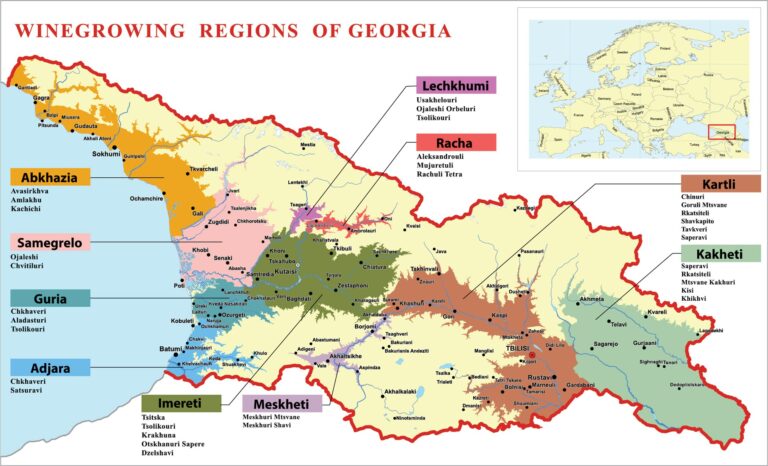Many historians mark Georgia as the birthplace of wine. Its vinous history dates back an astonishing 8,000 years and over the last decade the country has experienced a relative renaissance due, in part, to the world’s increasing interest in unique, low-intervention wines. Georgia sits on the eastern edge of the Black Sea, where Europe meets Asia. For a small nation (roughly the size of New Brunswick), it grows a surprising number of grape varieties (525), almost all of which are indigenous to the region. 49,000 hectares of vineyards are spread throughout 30 appellations (PDOs) producing 166M litres of wine each year (a little less than what’s produced in Austria). Wine in Georgia is a very big deal. It’s a great source of national pride and identity and an important component of the country’s economy. There are over 2,000 registered producers, with 400+ exporting their wines around the world.

Dip your toe into Georgian wine and you’ll be rewarded with a fresh, unique and engaging experience. The sheer number of native grapes and distinctive wine styles make every bottle an adventure and a delicious challenge for even a seasoned wine enthusiast. The country is known best for producing some of the world’s great Orange, or Amber, wines. The most interesting of these are fermented and aged in qvevri, handcrafted oval-shaped clay vessels that are placed in the ground. The vessels are inert and don’t impart any flavour or tannin to the wine, but the shape enables fermenting/aging wine to be moved around more easily, elevating the extraction of flavours and structure. When buried, fermentation and aging occur under extremely stable temperatures, allowing sugars to slowly and naturally convert to alcohol. The process takes months, often evolving over the entire winter season, and the resulting wines are complex and textured.
While the country grows 500+ grapes, only 15-20 are exported in any significant volume. 75% of these are white, chief among them Rkatsiteli, the most planted and oldest variety in the region. This versatile grape is capable of making traditional dry, still whites as well as Orange and sweet wines. Tsolikouri is another widely-planted white grape. Its thick skins and loose bunches inhibit rot and disease, making organic viticulture relatively straightforward. It gives aromas ranging from ripe apricot and peach in richer versions, to grapefruit and quince in lighter, drier styles. Saperavi is the king of black grapes in Georgia, making darkly-coloured, tannic wines with plenty of complexity, acidity and often elevated levels of alcohol.


